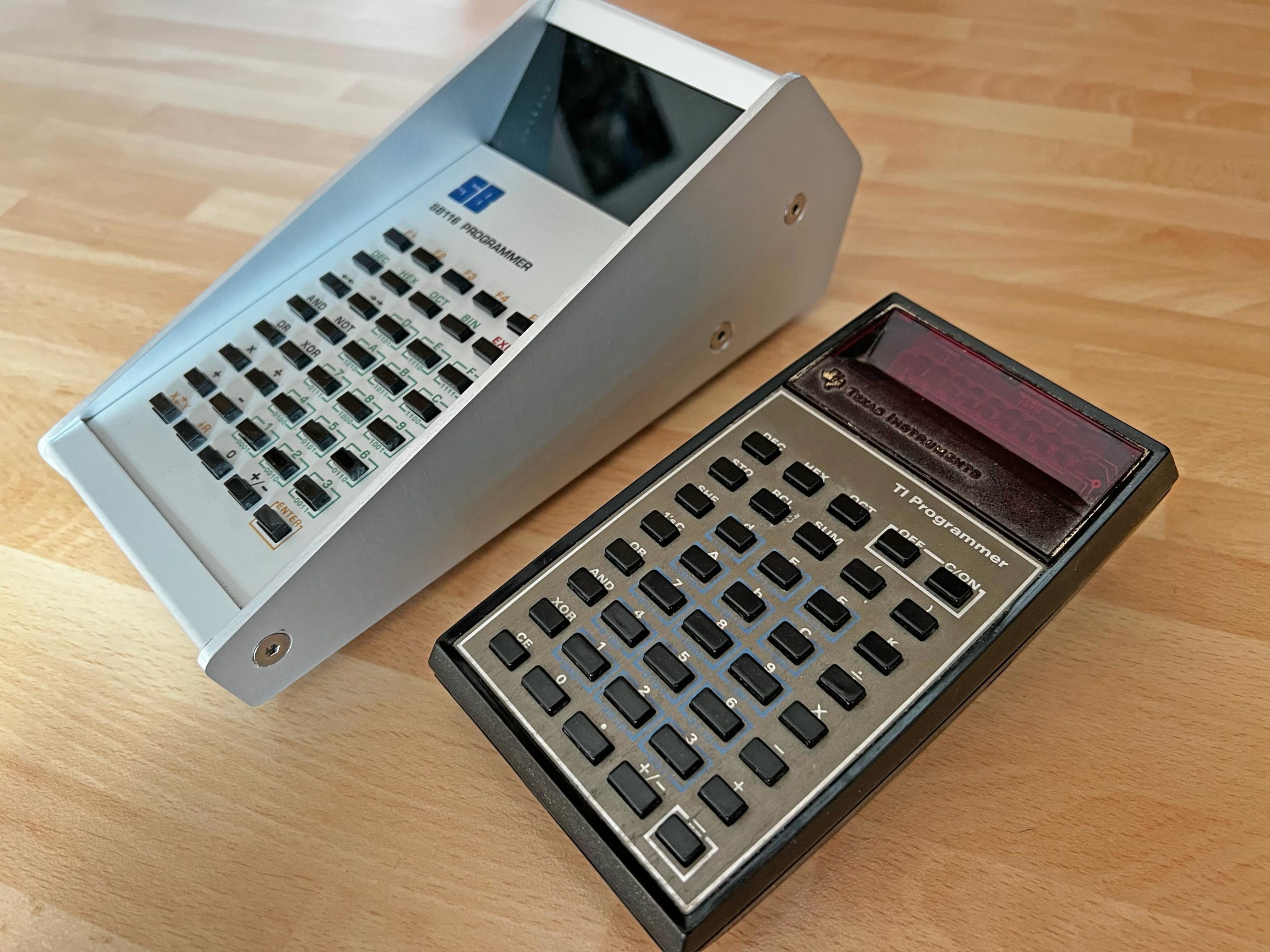Simon Boak's SB116 is a DIY calculator inspired by the TI programmer
Simon Boak's SB116 is a DIY calculator inspired by the TI programmer
Arduino Team – September 13, 2022

Many types of calculators exist beyond the basic models that everyone used in elementary school. The most common is the scientific calculator, including the iconic Texas Instruments TI-83. Programmer's calculators contain buttons and features designed to help with coding, with the ability to work in binary, hexadecimal and other basic systems and perform logical operations like XOR and AND. Simon Boak had a 45-year-old TI programmer who was becoming unreliable, so he built his own 16-bit Reverse Polish Integer Notation (RPN) calculator with an Arduino.
Boak's SB116 Programmer's Calculator very closely mimics both the button layout and functionality of this older TI calculator. The most visible difference is that the SB116 has a 2.42-inch OLED display based on a modern SSD139 driver with 128×64 resolution, unlike the vintage TI retro bubble LED display. The keyboard is nearly identical to the original, with the only other major external cosmetic difference being the beautiful custom aluminum enclosure that Boak built. To add to the aesthetic, Boak even created a matching retail box which looks absolutely fantastic.

The hardware components of this calculator are minimal, as the Arduino can easily handle all the processing involved. It's a Nano, which connects to the OLED display and a custom keyboard PCB that contains 40 rubber dome buttons. The user can switch power between a USB port or a set of three AAA batteries. Boak's Arduino sketches handle all of the calculator's complex functionality and even store selections when the calculator shuts down, as well as storing registers that one would expect from a programmer's calculator.

Arduino Team – September 13, 2022

Many types of calculators exist beyond the basic models that everyone used in elementary school. The most common is the scientific calculator, including the iconic Texas Instruments TI-83. Programmer's calculators contain buttons and features designed to help with coding, with the ability to work in binary, hexadecimal and other basic systems and perform logical operations like XOR and AND. Simon Boak had a 45-year-old TI programmer who was becoming unreliable, so he built his own 16-bit Reverse Polish Integer Notation (RPN) calculator with an Arduino.
Boak's SB116 Programmer's Calculator very closely mimics both the button layout and functionality of this older TI calculator. The most visible difference is that the SB116 has a 2.42-inch OLED display based on a modern SSD139 driver with 128×64 resolution, unlike the vintage TI retro bubble LED display. The keyboard is nearly identical to the original, with the only other major external cosmetic difference being the beautiful custom aluminum enclosure that Boak built. To add to the aesthetic, Boak even created a matching retail box which looks absolutely fantastic.

The hardware components of this calculator are minimal, as the Arduino can easily handle all the processing involved. It's a Nano, which connects to the OLED display and a custom keyboard PCB that contains 40 rubber dome buttons. The user can switch power between a USB port or a set of three AAA batteries. Boak's Arduino sketches handle all of the calculator's complex functionality and even store selections when the calculator shuts down, as well as storing registers that one would expect from a programmer's calculator.
What's Your Reaction?














![Three of ID's top PR executives quit ad firm Powerhouse [EXCLUSIVE]](https://variety.com/wp-content/uploads/2023/02/ID-PR-Logo.jpg?#)







